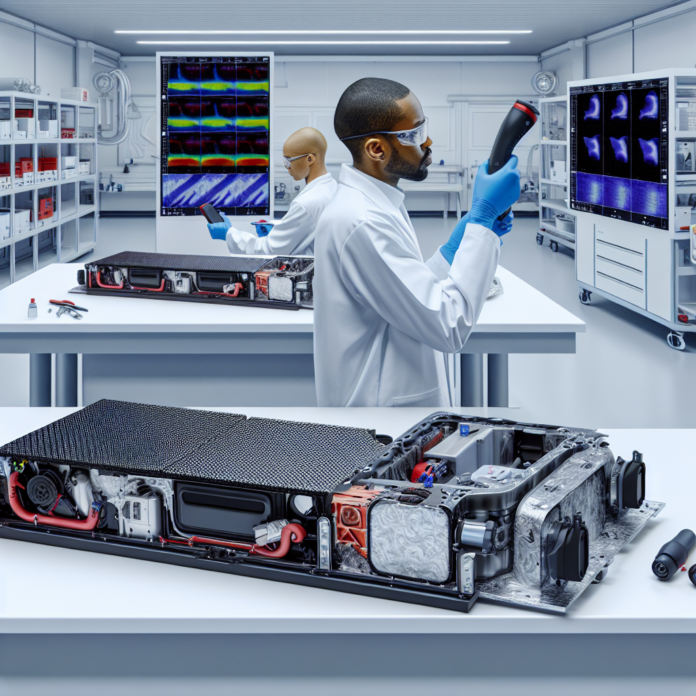
“`html
Tesla vs. BYD Battery Comparison: Researchers Reveal the Better Choice
Introduction
In the race for electric vehicle (EV) supremacy, two major players—Tesla and BYD—dominate the global market. As EV adoption continues to rise, battery technology remains a critical factor in determining performance, efficiency, and longevity. But which company offers the superior battery technology?
Research comparing Tesla and BYD battery technologies has shed light on their strengths and weaknesses. This in-depth analysis explores their chemistry, energy efficiency, cost-effectiveness, and real-world performance to find out which EV battery is the better choice.
Understanding Tesla and BYD Battery Technologies
Tesla’s Battery Technology
Tesla utilizes two primary battery chemistries:
- Nickel-Cobalt-Aluminum (NCA) batteries: These are commonly used in Tesla’s high-end models, such as the Model S and Model X, offering high energy density and long-range capabilities.
- Lithium Iron Phosphate (LFP) batteries: Tesla has introduced LFP batteries in some entry-level Model 3 and Model Y variants due to their cost-effectiveness and improved cycle life.
Tesla’s advancements in battery technology, particularly with their 4680 battery cells, aim to enhance performance and reduce costs. These cells promise greater energy density, improved efficiency, and a more sustainable manufacturing process.
BYD’s Battery Technology
BYD, a direct competitor to Tesla and a leader in EV battery production, primarily relies on LFP battery technology. Their revolutionary Blade Battery has gained significant attention due to its remarkable safety, durability, and efficiency.
- Blade Battery Technology: This LFP-based battery enhances energy density while significantly improving safety by minimizing the risk of thermal runaway (battery fires).
- Cost-Effectiveness and Longevity: LFP chemistry is known for its extended life cycle and lower cost, making BYD’s batteries an attractive option for long-term EV use.
Tesla vs. BYD: Key Comparison Factors
1. Energy Density and Efficiency
Energy density, measured in Watt-hours per kilogram (Wh/kg), determines how much energy a battery can store. Tesla’s NCA batteries have a higher energy density compared to BYD’s Blade Battery, allowing their vehicles to achieve longer driving ranges.
- Tesla’s NCA batteries: Higher range due to increased energy density (up to 260 Wh/kg).
- BYD’s LFP Blade Battery: Lower energy density (~150 Wh/kg) but compensates with improved efficiency and longevity.
While Tesla’s battery packs provide superior energy capacity, BYD’s LFP chemistry offers greater stability and longevity, making it a more reliable option in specific use cases.
2. Charging Speed
Fast charging is an essential factor for many EV owners. Tesla’s batteries, particularly those in models equipped with 4680 cells, support higher charging speeds compared to BYD’s Blade Battery.
- Tesla Superchargers: Can charge up to 250 kW, allowing models like the Model Y to gain 200 miles of range in approximately 15 minutes.
- BYD Charging Performance: Blade Battery supports charging speeds of around 100-150 kW, making it slightly slower than Tesla’s fastest options.
For drivers who prioritize rapid charging, Tesla’s batteries have a noticeable advantage.
3. Battery Lifespan and Degradation
Battery longevity is critical for EV cost-efficiency, as replacing battery packs can be expensive. LFP chemistry used in BYD’s Blade Battery inherently offers longer cycle life compared to Tesla’s NCA batteries.
- Tesla’s NCA batteries: Typically last 1,000-1,500 charge cycles before noticeable degradation.
- BYD’s Blade Battery: Can endure 3,000+ charge cycles, providing significantly greater lifespan.
For fleet operations and long-term ownership, BYD’s battery technology provides a more sustainable option.
4. Safety and Thermal Stability
Battery safety is a top priority, especially considering reports of EV battery fires in the past. Here’s how both brands compare:
- Tesla’s NCA Batteries: Higher energy density but increased risk of overheating and thermal runaway.
- BYD’s Blade Battery: Exceptional thermal stability and virtually immune to combustion, even when punctured.
BYD’s Blade Battery demonstrated superior safety in rigorous testing, making it the preferred choice for users prioritizing security and reliability.
5. Cost and Affordability
Pricing differences between Tesla and BYD vehicles are partly due to their battery costs.
- Tesla’s NCA Batteries: More expensive due to cobalt and nickel usage.
- BYD’s Blade Battery: More affordable since LFP technology does not rely on costly metals.
For budget-conscious buyers, BYD’s battery technology offers a cost-efficient solution without compromising performance.
Which Battery is the Better Choice?
Choosing between Tesla and BYD batteries depends largely on user priorities. Here’s a final breakdown to help decide:
Choose Tesla if:
- You prioritize longer driving range and efficiency.
- You need faster charging speeds for long-distance travel.
Choose BYD if:
- You want a more affordable and safer battery with higher durability.
- You are focused on long-term vehicle ownership with minimal degradation.
Final Verdict
Both Tesla and BYD have developed highly competitive battery technologies catering to different market segments. Tesla excels in range, charging speed, and energy density, while BYD offers an affordable, long-lasting, and safer battery solution.
Ultimately, the choice comes down to whether you prioritize performance and innovation (Tesla) or reliability and cost-efficiency (BYD). With ongoing battery advancements, the future of EV technology remains exciting as both companies push the boundaries of energy storage and sustainability.
“`




